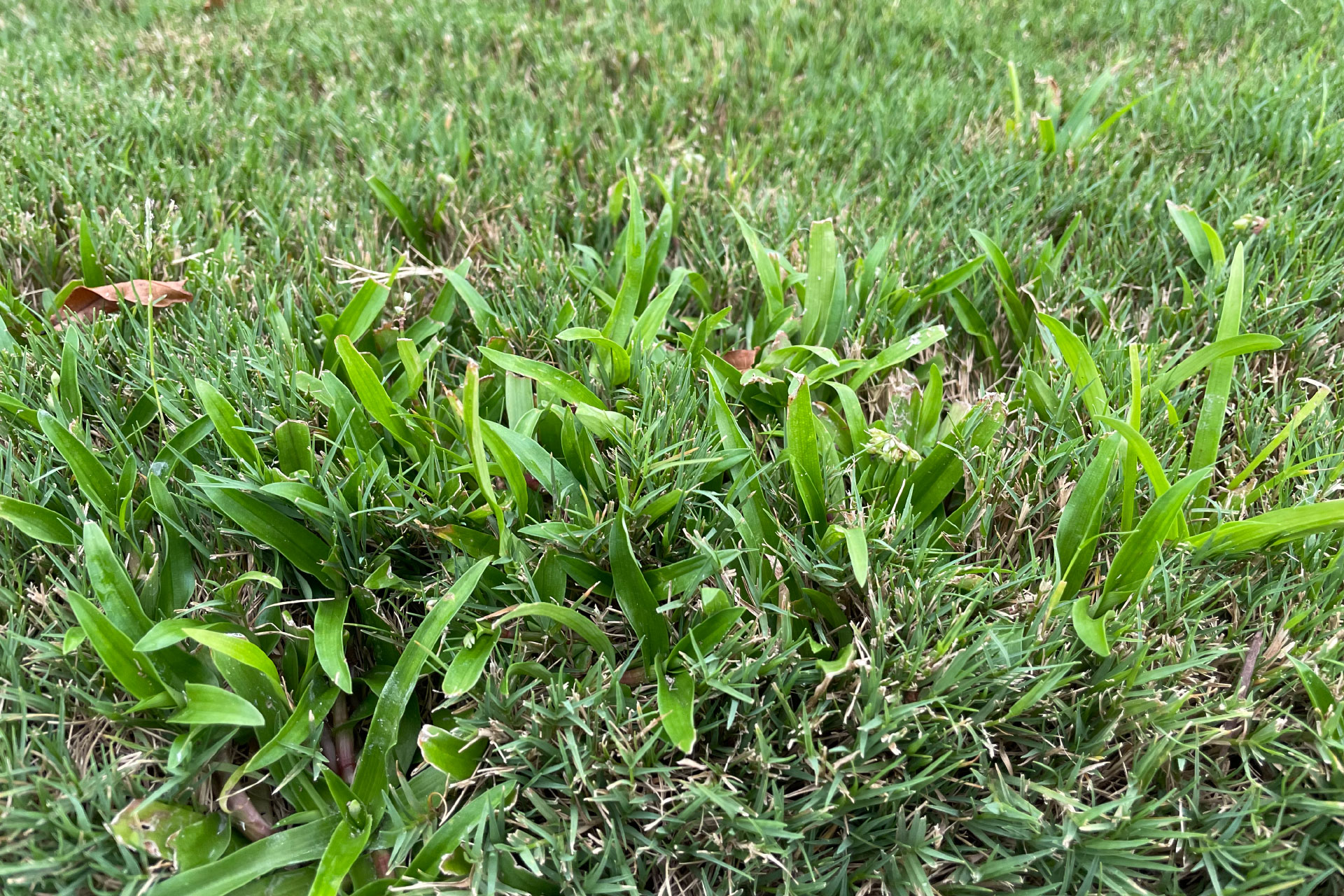Controlling doveweed spread has become an important challenge in recent years. It is an annual summer weed that tends to spread into areas where growing conditions are favorable. Its presence and growth potential in the Georgia area have caused concern about how to stop its spread.
With any pest, success is based on its presence and optimal conditions. By observing doveweed’s growth habits and preferred environment, we understand ways to make it less comfortable in turf. Let’s explore several cultural practices that play a fundamental role in controlling doveweed spread.
Wet Soils
In years with excessive rainfall and constant dampness, Doveweed can (and will) thrive in conditions that may prove challenging for turfgrass. So, if we can’t control the weather, what can we control?
In landscapes with irrigation, maintaining ideal watering techniques is crucial. Established lawns prefer an inch of rain or equivalent input per week, applied deeply and infrequently when possible. When we receive appropriate rainfall, turning off programmed irrigation helps keep soils moist, encouraging turf growth and discouraging weeds that prefer soil-borne water.
Leveling low spots by topdressing also helps reduce puddling or pooling. Areas where water puddles gather tend to stay wetter for longer periods. This can reduce turf density, providing more opportunities for weeds to establish. Lastly, aerification allows greater air exchange in the root zone. In regard to controlling doveweed spread, it encourages a dense, healthy lawn and helps relieve moisture trapped in thatch or the surface soil.
Manage Cut Height and Frequency
Cut height and frequency are exceptionally important to turf health and competition. Managing cut-height is extremely important for any healthy turf. An appropriate height for your turf species provides it the opportunity to maximize energy production and maintain a dense canopy. This shades the soil surface, reducing weed emergence. It also provides a formidable competitor for moisture and nutrients. An appropriate height also helps reduce the spread of doveweed by lessening the opportunity for the mower to cut and move segments of the plant that can grow elsewhere in your lawn.
Mowing frequency is also extremely important. Cutting weekly, removing a third of the turf present helps encourage preferred growth habits. By avoiding mower stress, you also reduce light exposure to the soil surface and encourage continued health, growth, and competitiveness for your turf.
Mechanical Removal
Mechanical removal is an option but must be done with consideration. Hand pulling most weeds is an effective form of removal but can prove challenging with doveweed. It readily breaks away from its root mass and will regrow from the material left in the ground. Also, casting the pulled material to the side could result in new plants if the discarded material includes a segment to root from.
The most effective mode of eradication is digging up the plant, root, and all. Follow that with filling and topdressing the area. Sodding may be optimal if the spot is large enough and if the timing is appropriate. Lastly, a non-selective weed-killer from a hardware store may be effective, but its level impact will decrease substantially as the weed matures. Please note that this will be injurious to the surrounding turf.
Nature’s Turf and Doveweed
Doveweed is a fairly new and demanding weed in the Georgia area. Its physical traits and tenacity make it a unique challenge, and control strategies are regularly changing. We are actively seeking and consuming information as it’s made available, noting our successes, and using our experience to create and employ an effective program.
In conclusion, here are a few final important notes to remember:
- Soil moisture is fundamental. Keeping your lawn in the ideal range when possible is key.
- Cutting height and frequency are important to ensure that your grass is competitive and opportunities for doveweed’s success are low.
- Having a professional turf treatment company like our team at Nature’s Turf is beneficial.
For more information on controlling doveweed spread in your lawn, reach out to our team.








